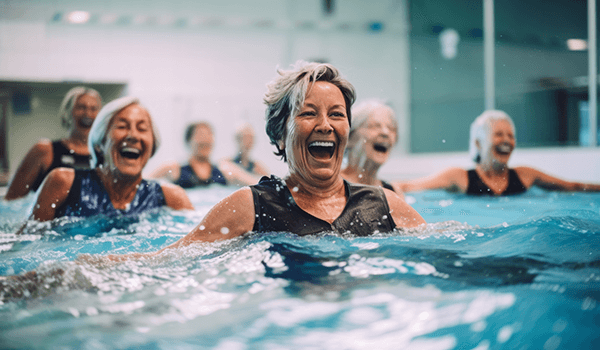News•January 18, 2024
Exercise to Increase Brain Volume

By Ram Rao, Ph.D., Principal Research Scientist for Apollo Health
Research studies clearly show that any kind of physical activity offers neuroprotection. In addition to reducing the risk for Alzheimer’s, exercise helps to maintain a healthy body mass index (BMI), lowers insulin resistance, reduces inflammation, improves blood pressure, reduces the risk for heart disease and stroke, and also combats stress and anxiety, while improving mood and sleep. A recent study now links regular exercise to better brain health. The study shows that physical exercise increases the size of brain areas that are responsible for memory and learning.
Our ancestors — the hominins — led a highly active lifestyle. As hunter-gatherers, they worked hard, traveled long distances for food, and kept challenging their brains by seeking out different ways to find food and creating suitable tools. Researchers believe that this may have led to modern humans attaining a longer lifespan and a larger brain. Unfortunately, thanks to a hyper-competitive world, we have returned to a more sedentary way of life that has given rise to an entire gamut of chronic diseases, including obesity, insulin resistance, cardiovascular disease, and dementia. By acknowledging our ancestral genome and returning to the lifestyle and physical activity led by our ancestors, we have the potential to avoid the chronic diseases associated with the modern lifestyle.
Physical exercise provides benefits in many ways that reduce the risk of Alzheimer’s. It:
● Improves cerebral blood flow.
● Activates the release of several brain-derived “feel-good hormones and neurotropic factors.”
● Activates the glymphatic system- the waste-clearing channel.
● Increases energy levels by stimulating ATP (a fuel source for cells) release.
● Reduces inflammation and improves immunity.
● Improves mood and overall being.
The great news is that any form of exercise helps — everything from walking to gardening to dancing. Domestic chores like carrying the laundry up and down the stairs, bending over to clean or mop the floors, yard work including cleaning and beautifying the grounds, pulling weeds, spreading mulch, sweeping, raking, or shoveling are all great forms of physical exercise.
A recent study now provides an exciting link between regular exercise and brain health. The study shows that exercise increases brain size, especially in those regions that are involved in memory and learning. Researchers looked at MRI brain scans from more than 10,000+ individuals and found larger brain volumes in those individuals who regularly engaged in physical activities such as walking, running, or sports. Specific areas of the brain that were larger included the gray matter (which helps with processing information), white matter (which connects different brain regions), and the hippocampus (important for memory and learning). Bigger brain volumes can help delay the cognitive decline that comes with conditions such as Alzheimer’s. Interestingly, the researchers found that even moderate levels of physical activity, such as taking fewer than 4,000 steps a day (much less than the recommended 10,000 steps), have a positive effect on brain health. This is great news as it makes it easier for many people. The study results confirm previous work by other researchers linking exercise to improved brain structure. While most of these studies do not prove direct cause and effect, nevertheless, there definitely is a close relationship between exercise and improved brain health.
The path of exercise and activity to keep our brain healthy appears to be easy. Whether it’s a walk or a favorite sport, it is recommended that we incorporate physical exercise as a daily habit, almost like taking a prescription medication. When starting any exercise program, be sure to check with your physician to make sure that you are healthy enough to engage in your preferred activities. If you are struggling with chronic emotions or stress, you may want to avoid intense exercise until all underlying issues have been addressed. Aim for a goal of exercising at slow-moderate intensity. Start with 10 to 15 minutes for a few days and increase the activity by five or ten minutes every week until you reach your goal. In addition, since several studies have shown that it takes about six months to notice any benefits of exercise, be patient if you are looking for any health improvements. With the new year in progress and the overall enthusiasm to keep up with health resolutions, it is always tempting to overdo it. Better engage in physical activities safely than hurt yourself.




